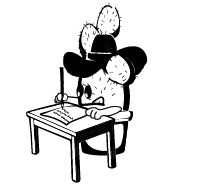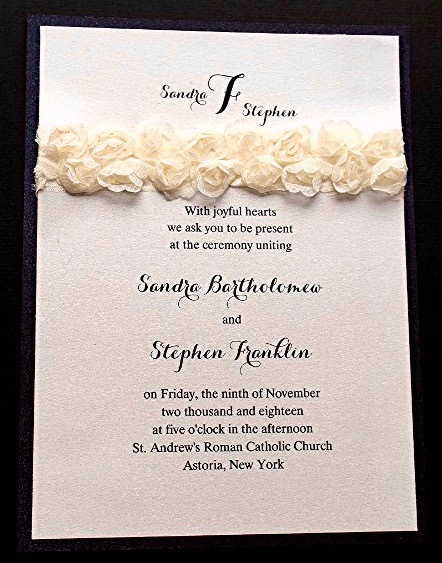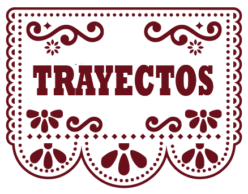Question words: Uso y forma
![]() ¡Los estudiantes preguntan (ask questions)!
¡Los estudiantes preguntan (ask questions)!
Carolina es una estudiante universitaria. She is talking to some of her fellow students. What is she asking? Pay attention to the answers to see if you can discover what each question word she uses means. What do you notice about question words in Spanish?
Carolina:
Carolina:
Carolina:
Carolina:
Carolina:
Carolina:
Did you discover what each question word means? Question words in Spanish and English work in similar ways, but there are also differences. Have you noticed any differences? Let’s see…
| Question words that work in similar ways in both languages | Examples |
| ¿Cómo? How? / What (to be) like? | ¿Cómo estás? (How are you?) ¿Cómo es tu clase de español? (What is your Spanish class like?) |
| ¿Cuándo? When? | ¿Cuándo es tu clase de español? (When is your Spanish class?) |
| ¿De dónde? From where? | ¿De dónde eres? (Where are you from?) |
| ¿Dónde? Where? | ¿Dónde es la clase de español? (Where is the Spanish class?) |
| ¿Por qué? Why? | ¿Por qué es interesante la clase? (Why is the class interesting?) |
As you can see, like in English, these words are always placed at the beginning of the question, and they never change, regardless of the noun or verb that follows them.
| Question words that are different in Spanish | Examples |
| ¿Cuánto? (masc.) / ¿Cuánta? (fem.) How much? | ¿Cuánto jugo hay? (How much juice is there?) ¿Cuánta harina hay? (How much flour is there?) |
| ¿Cuántos? (masc.) / ¿Cuántas? (fem.) How many? | ¿Cuántos hombres hay en la clase? (How many men are there in the class?) ¿Cuántas profesoras hay en el departamento? (How many female professors are there in the department?) |
| ¿Quién? (sing.) Who? | ¿Quién es tu instructor de español? (Who is your Spanish instructor?) |
| ¿Quiénes? (plural) Who? | ¿Quiénes son tus amigos? (Who are your friends?) |
| ¿Cuál? (sing.) Which? | ¿Cuál es tu clase favorita? (Which is your favorite class?) |
| ¿Cuáles? (plural) Which? | ¿Cuáles son tus clases favoritas? (Which are your favorite classes?) |
As you can see, most of these question words change their ending depending on the gender and number of the noun that follows them.
![]() ¡Ojo!
¡Ojo!
- Quién and cuál, which are always followed by a verb, only change their ending for number. These two question words can never be followed by a noun.
- Notice that questions in Spanish always start with an obligatory inverted question mark [¿]. Also, all Spanish question words (when used in a question) always have accents.
Now let’s actively use our new words.
 ¡Manos a la obra!
¡Manos a la obra!
![]() Actividad 0-11. Las preguntas de Mariana.
Actividad 0-11. Las preguntas de Mariana.
Remember Mariana, the international student you wrote to in Actividad 0-9? She has replied to your message, and she has some questions. What is she asking? Fill in the blanks with the appropriate question words depending on the context.
Hola, Chicos. ¡Muchas gracias por el mensaje! Su español es fenomenal. 1. ¿______________ están? Yo estoy muy bien.
Tengo (I have) unas preguntas para ustedes. 2. ¿______________ son los profesores en la universidad? ¿Son serios? ¿Son difíciles?
3. ¿ ______________ libros (books) hay para la clase de Biología 101? ¿Uno? ¿Dos?
Y 4. ¿ ______________ son los partidos (matches) de fútbol americano? ¿Son todos (all) en el estadio de la universidad?
5. ¿ ______________ son los exámenes finales? ¿En diciembre?
6. ¿ ______________ es una ciudad interesante en Tejas? ¿Austin? ¿Houston?
7. ¿ ______________ es José Antonio Navarro? ¿Es un profesor?
8. ¿ ______________ son la mayoría de los estudiantes de la universidad? ¿De Tejas?
¡Muchas gracias por la información! Saludos, Mariana
![]() Actividad 0-12. Una invitación. Your Spanish-speaking friend asks you some questions about an invitation to a wedding (una boda) you have received. What is she asking? Using the information in the following invitation and the answers provided, ask appropriate questions. Remember to use the conjugated forms of the verb ser you learned in Hablemos de gramática: Estructura 1, and the verb hay. Useful words:
Actividad 0-12. Una invitación. Your Spanish-speaking friend asks you some questions about an invitation to a wedding (una boda) you have received. What is she asking? Using the information in the following invitation and the answers provided, ask appropriate questions. Remember to use the conjugated forms of the verb ser you learned in Hablemos de gramática: Estructura 1, and the verb hay. Useful words:
- la boda (the wedding)
- los novios (bride and groom)
- invitados (guests)
- iglesia (church)

Amiga:
Amiga:
Amiga:
Amiga:
Amiga:
Amiga:
Amiga:
Amiga:
![]() Actividad 0-13. Seguimos conociendo a nuestros compañeros de clase (We continue getting to know our classmates).
Actividad 0-13. Seguimos conociendo a nuestros compañeros de clase (We continue getting to know our classmates).
Through this activity, you will continue to get to know your classmates. You need to work with two classmates you still do not know very well.
Paso 1. Think of six different questions you can ask them. Use the examples in previous sections, and the questions we have already practiced. You need to use the verbs ser and hay. For example, you can ask what their name is, of course; where they are from; who their favorite professor or class is; etc. But you can always be more adventurous and try to use new words! Remember that you can always ask your instructor for help! Also, you can watch this video to get more information about ways in which you can get to know another person.
![]() Presentarse en español
Presentarse en español
Paso 2. Now interact with your two classmates and get to know them better! Take turns asking and answering one another’s questions. Are you guys similar or different?
Click on the following button to continue using question words.
Now it’s time to learn more about letters and sounds in Spanish! Let’s learn about


